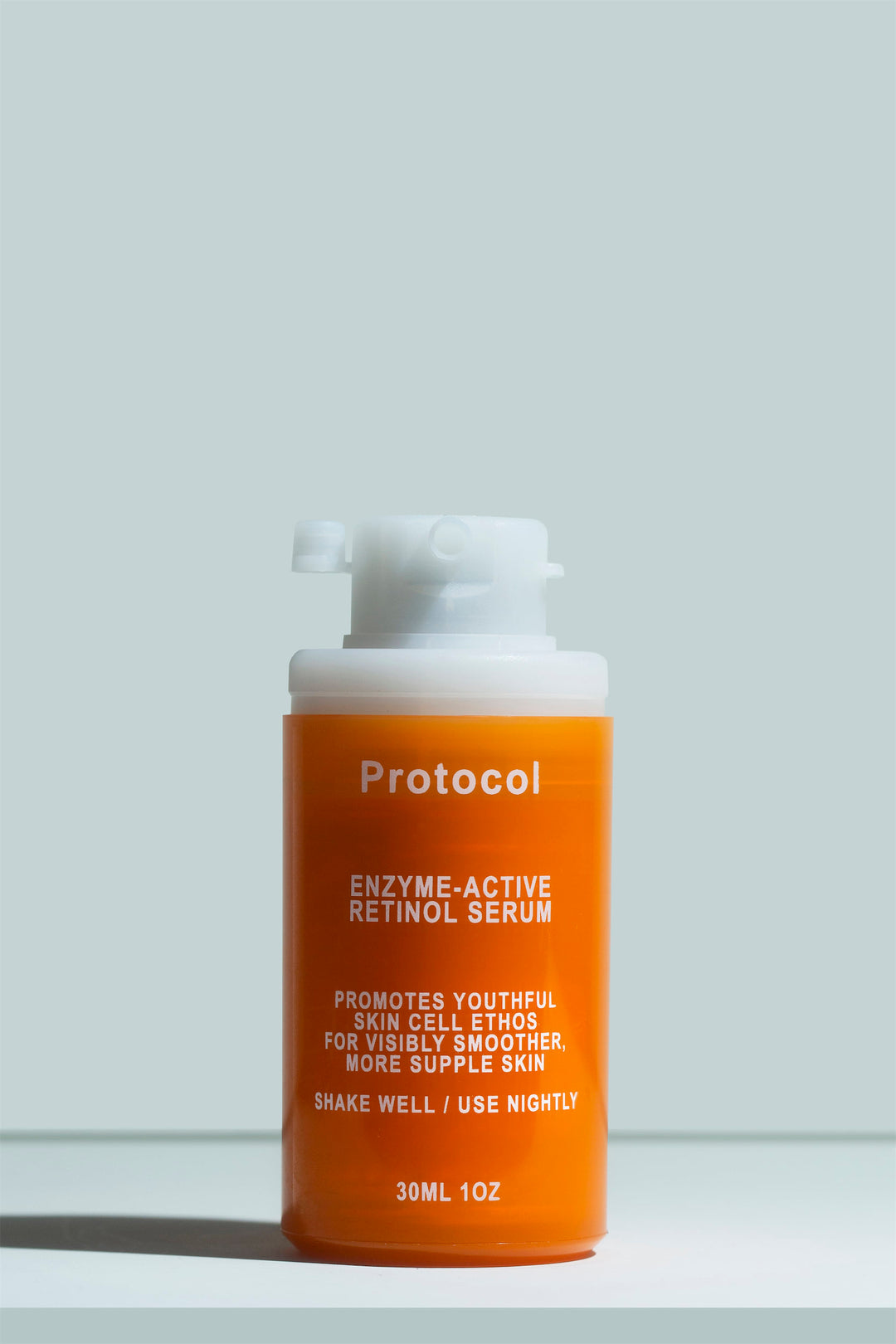Can You Use Salicylic Acid With Retinol?

You would think that the more you learn about skincare, the easier it’ll be to put things together.
Conflicting information about active ingredients like retinol and salicylic acid confuses the process, especially online. Some sources say you can’t use these ingredients together, as they might be too harsh for the skin. Others say it’s perfectly fine.
So can you use beta-hydroxy acids and retinoids together? How can you do it safely?
For those with acne-prone skin, combining retinol and salicylic acid can do wonders, helping keep your skin clear and blemish-free. If you’d like to try the combination, read this post to learn how to use the two together safely.
Can I use salicylic acid and retinol together?
It depends on your skin’s resilience and specific needs, but you might be able to use salicylic acid and retinol together without issues. If your skin is very sensitive, however, there is a risk that the two ingredients together might be too intense.
There are people out there who can’t use either retinol or salicylic acid. It serves as a good reminder of one of the fundamental rules in skincare: Your mileage may vary.
In general, however, there are plenty of ways to combine retinol and salicylic acid while mitigating the risks of irritation or barrier damage.
Why you might want to use retinol and BHA together
If you’re dealing with acne or you want to exfoliate oily skin and refine its texture, it makes a lot of sense to use both retinol and salicylic acid in your skincare routine.
Retinol, a form of vitamin A, is the skincare world’s anti-aging superstar. It impacts receptors in the skin that regulate how skin cells multiply and differentiate. In other words, it kicks cell renewal into gear and helps the skin renew itself more efficiently, resulting in smoother, clearer, more youthful-looking skin.
There are different types of retinoids with different strength levels. At Protocol Lab, we generally prefer the gentle yet highly effective retinal, which needs one less conversion than retinol to impact those retinoic acid receptors.
Salicylic acid, commonly referred to as beta-hydroxy acid or BHA, is a chemical exfoliant that breaks down the adhesion between cells. It forces the epidermis to shed dead skin cells. In some cases, it’s sold as an OTC solution for breakouts but is also commonly used in cosmetic exfoliants.
Compared to our other favorite combination, retinol and glycolic acid, there’s been less research on combining BHAs and retinoids.
Studies often test combination products or routines that involve a trifecta: AHAs, BHAs, and retinoids. For example, one study compared a retinol and salicylic acid regimen vs a benzoyl peroxide and AHA regimen in treating acne, and another one looked at applying retinoids directly after a salicylic acid peel to reduce signs of photoaging.
While these studies are too few and too dissimilar for easy conclusions, they do suggest that the combination can improve the skin and that it’s generally safe and tolerated by the skin as long as no ingredient is overused.
How to use salicylic acid and retinol together
The rules for introducing new active ingredients into your routine are largely the same, regardless of the product:
- Introduce one new product at a time
- Use product #1 slowly and gradually: Start 2-3 times a week, then every other day, until you find a sweet spot or can handle it daily.
- Learn to recognize the signs of irritation like redness, peeling, stinging, rashes, swelling, or tightness.
- If all goes well and you’d like to introduce a new product, slow down how often you use product #1, and introduce product #2 slowly and gradually.
- Increase frequency slowly until you hit your sweet spot!
Some people may need to use salicylic acid and retinol on alternate nights, while others can use both daily without an issue — your mileage may vary. Following this process will help you limit the risks of overwhelming the skin or causing barrier damage.
Choosing which ingredient to start with
It’s never a great idea to introduce two brand-new, high-powered active ingredients at the same time. Pick one:
- Retinol offers deep cellular stimulation, so it’s best if your main goals are smoother skin texture or anti-aging effects.
- Salicylic acid exfoliates and purifies within the pores, and is often ideal for those experiencing clogged pores or blemishes.
No matter which you choose, slowly incorporate it into your routine, giving it several weeks and making sure you’re not experiencing excessive irritation.
It’s common to experience a little bit of peeling or sensitivity when first starting out with retinoids, so if you do start with a retinol, make sure to get through that initial stage of retinization first.
Look for salicylic acid cleansers
Salicylic acid products are available in many formats, from serums and lotions to toners and cleansers. If your end-goal is to use both retinol and salicylic acid daily, we think it’s easiest to do with a salicylic acid cleanser. This will suit you well if you prefer a more minimalist routine since it’ll save you steps either in the morning or at night.
The main benefit of choosing a salicylic acid cleanser is that it’s a gentler way of exfoliating your skin, but still offers noticeable benefits when it comes to blemishes and clogged pores. Some people can use salicylic acid cleansers in the morning and at night, but we generally recommend that you start only using it a few times a week before slowly increasing frequency.
Save retinol for the night
Your skin is already primed for renewal at night, so this is the best time to use retinol. Unlike salicylic acid, which is easy to formulate, retinoidsrequire careful formulation.
Look for a water-based retinol, which will do a better job absorbing into your skin. Many retinoids expire before they even reach your home, due to unstable bottles or a packaging process that isn’t 100% oxygen-free. Our Enzyme-Active Retinol Serum contains 0.1% retinal, a gentle yet more bioactive retinoid that offers powerful effects with minimal irritation.
Adjust for lifestyle and preferences
Some of us love multi-step routines both in the morning and at night, others prefer to save all the work for nighttime. Others want to keep it as minimalist as possible. Take those preferences into account when shopping for your new active products and coming up with your final routine.
If your skin is sensitive, you can cycle your salicylic acid and retinol by using them on alternate nights. If you’re the kind of person who likes weekly rituals and short routines otherwise, you can opt for a stronger salicylic acid product to use as an occasional peel, while still using a retinoid more often.
It’s okay if you can’t use them together
As your routine progresses and you introduce more active ingredients, the complexity can reach mathematical proportions. We hope that now you know not just that you can use salicylic acid with retinol, but also how to do it safely and effectively.
If your skin is very sensitive or you’re not seeing any benefits… It’s okay if you find out that you can’t use retinol and salicylic acid together. Many of our clients have noticed dramatic improvement in the appearance of their acne-prone skin even with a basic Protocol Skincare routine.
Shop Protocol Skincare.




